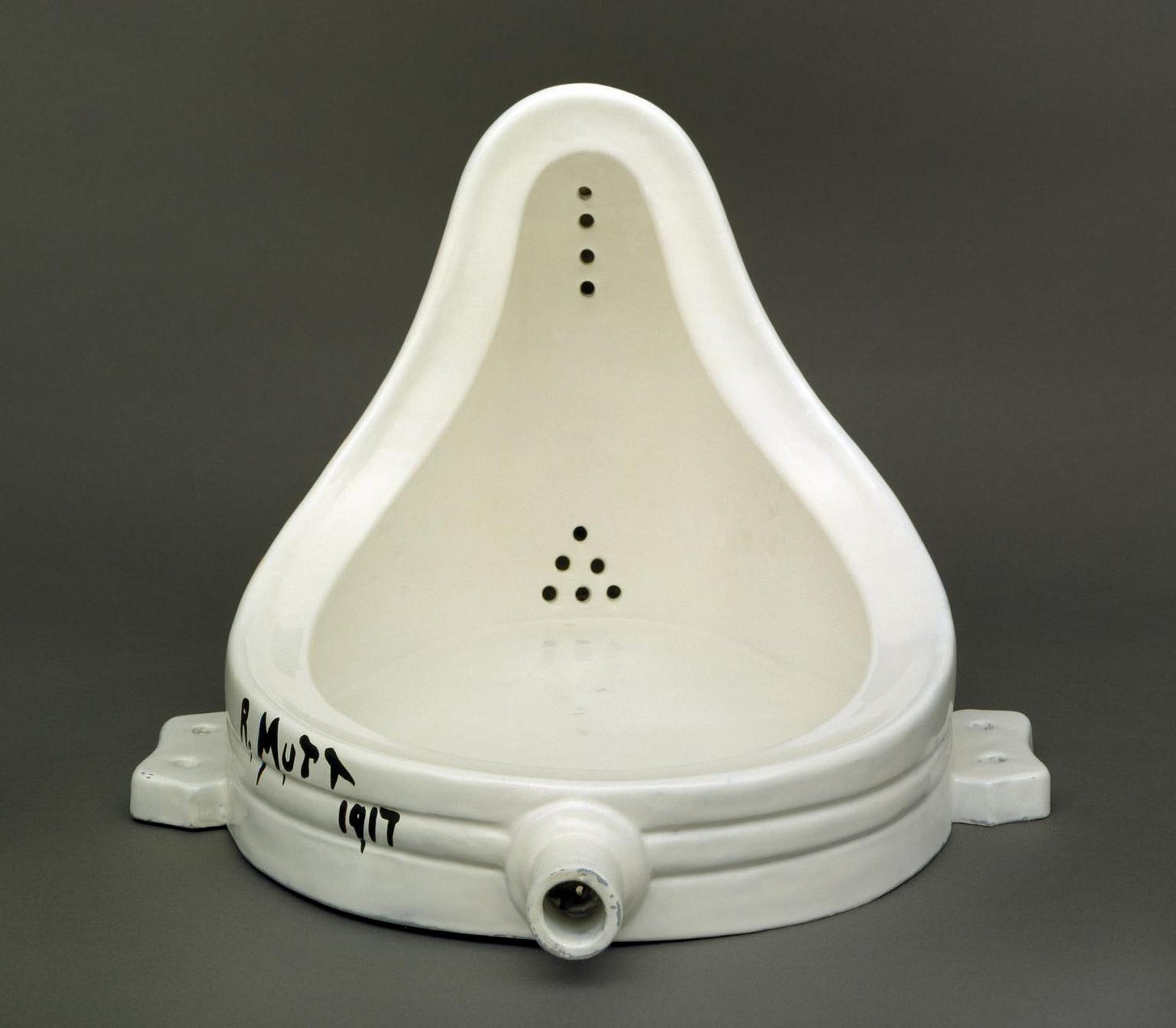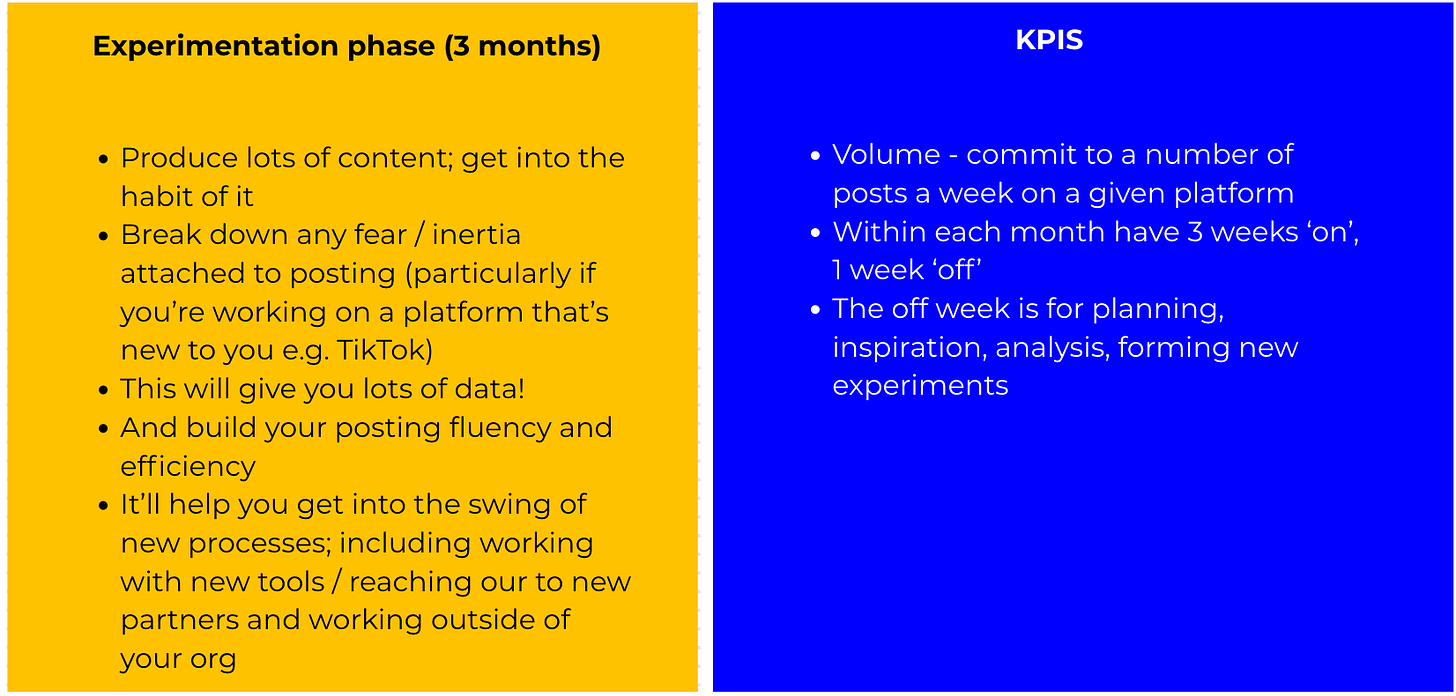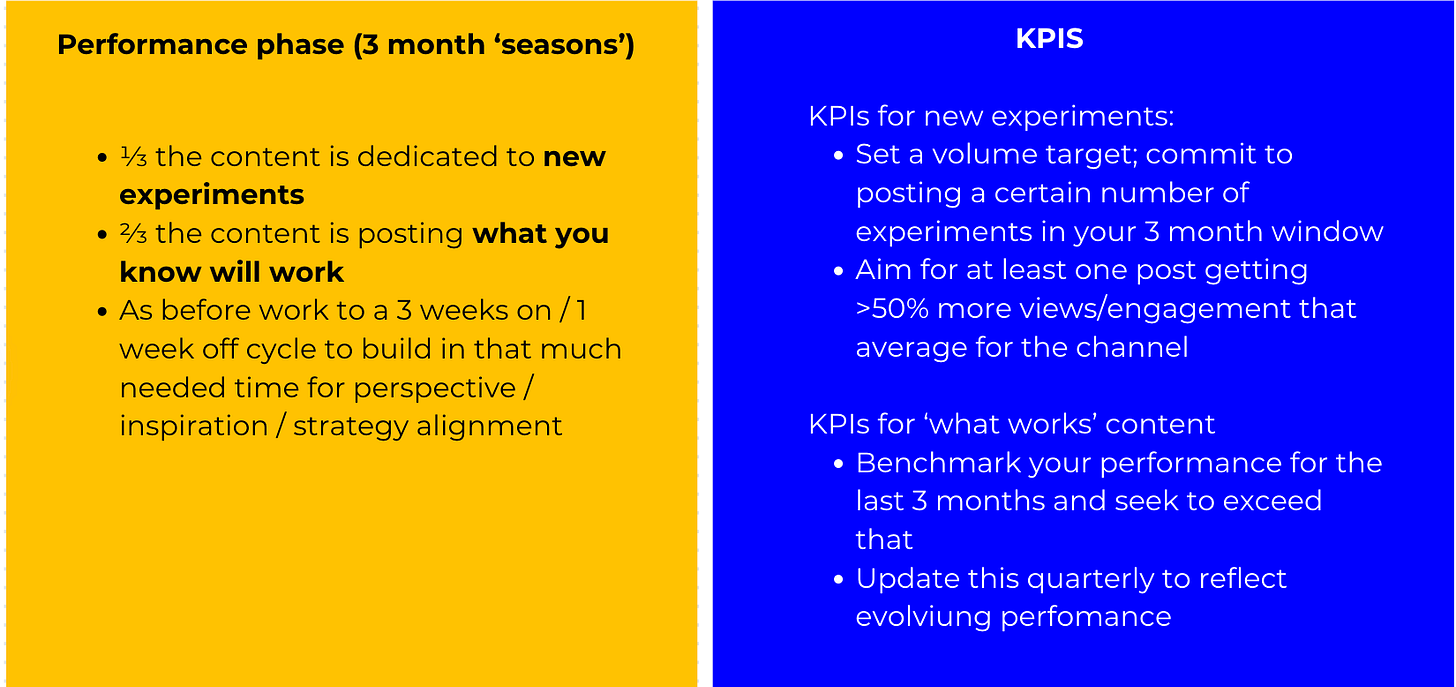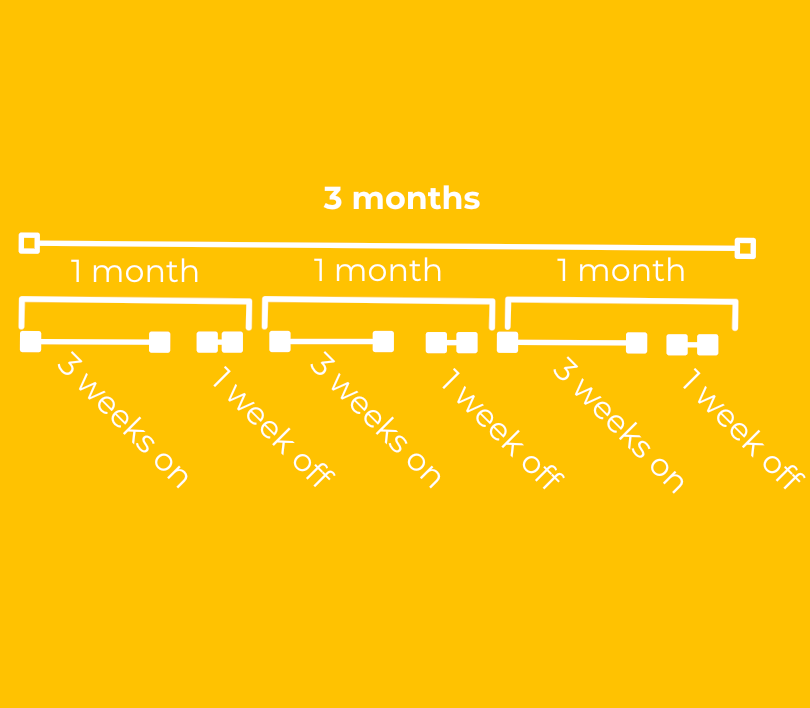1/3 learning, 2/3 performance - a new model for social media KPIs
Setting ambitious social media KPIs is a double-edged sword.
It’s difficult to be creative while you’re still chasing the coattails of last month’s success. There’s no expectation that you need time and space for exploring new formats, trends, and platform features.
If you’re continually going for content you know will work well, you limit yourself from being more experimental, spontaneous, joyful.
It’s only by being willing to fail that you expand your repertoire of what works and create the conditions for fresh and surprising content.

Reframing experimentation as part of performance
We need KPIs that are flexible to this dual function of creating content (experimentation and performance).
We need KPIs that allow space for and stimulate experimentation and analysis…
…Whilst maintaining a core of easy to produce / replicate formats that help keep numbers and consideration high.
What this looks like in practice
After creating a social media strategy (or a new social media plan) you’re anticipating a lot of change.
At this point, all you really have is some ideas / hypotheses about what might work. But, so far, it’s untested.
At this point it’s tempting to:
Forecast ambitious KPIs
Run your content
Get dispirited when it doesn’t immediately meet those metrics…
…Go back to doing what’s easy, known and internally recognised…
…without taking the time to analyse which bits of your content worked well;
Were there standout posts?
Was the ‘hook’ of the videos really engaging, but the follow-through less effective?
Did you get more comments than you typically would?
Did using a tool or AI assistant speed up aspects of production in a helpful way?
Instead…
You create your new social media plan and be up front about the unknowns, the need for experimentation and time to be agile/responsive to a break from the plan.
If you’re presenting results to a board or SMT, framing experiments as part of a structured learning cycle can shift the conversation from ‘why didn’t this go viral’ to ‘here’s what we now know works better’.
3-month experimentation phase
At the start of rolling out the new plan/strategy you institute an incubation/experimentation phase, during which you:
Produce lots of content, get into the habit of it
Break down any fear / inertia attached to posting (particularly important if you’re planning on publishing to a platform that’s new to you e.g. TikTok)
This will give you lots of data!
…and build your posting fluency and efficiency
It’ll help you get into the swing of new processes, including working with new tools and content formats, and reaching out to new partners/ working outside of your organisation
KPIs for the experimentation phase
Volume – commit to a number of posts a week on a given platform
Within each month have 3 weeks ‘on’, 1 week ‘off’
The off week is for planning, inspiration, analysis, forming new experiments. The on weeks are for posting!
At the end of the three months, evaluate:
What worked?
What was the most fun to work on?
What feels like it’s got legs and/or did well considering the amount of time it took to create?
From there, define:
What activity to pause
What worked well / could be evolved
What you’re curious to experiment with further
Performance phase (BAU)
After the initial incubation phase, you can move into your Business As Usual (or slightly sexier ‘performance phase’). This also has elements built in for time and reflection but anticipates more of your energy also being devoted to getting the numbers in. During this phase:
You work in 3 month ‘seasons’
1/3 of the content you work on and publish is dedicated to new experiments
2/3 of the content is posting what you know will work
As before, work to a 3 weeks on / 1 week off cycle, to build in that much needed time for perspective / inspiration / strategy alignment
KPIs for the performance phase
Separate KPIs for content that is a new experiment and content you expect to work well
For new experiments…
Set a volume target; commit to posting a certain number of experiments in your 3-month window
Aim for at least one post getting >50% more views/engagement than average for the channel
For ‘what works’ content
Benchmark your performance for the last 3 months and seek to exceed that
Update this quarterly to reflect evolving performance
Think about what ‘engagement’ matters to you. This will be different for different platforms; it is just likes? For video content, you’ll likely want more detailed metrics like impressions click through rate (CTR) and retention after the opening hook (and how long you want to define the ‘hook’ will be different depending on whether it’s long or short form video).
That’s it – let me know what you think. In particular, how are you handling experimentation vs performance in your team? How do you manage the alchemy of creating great content? Does it look a bit different to the Shutterstock image? Do you have a different framework that works?





